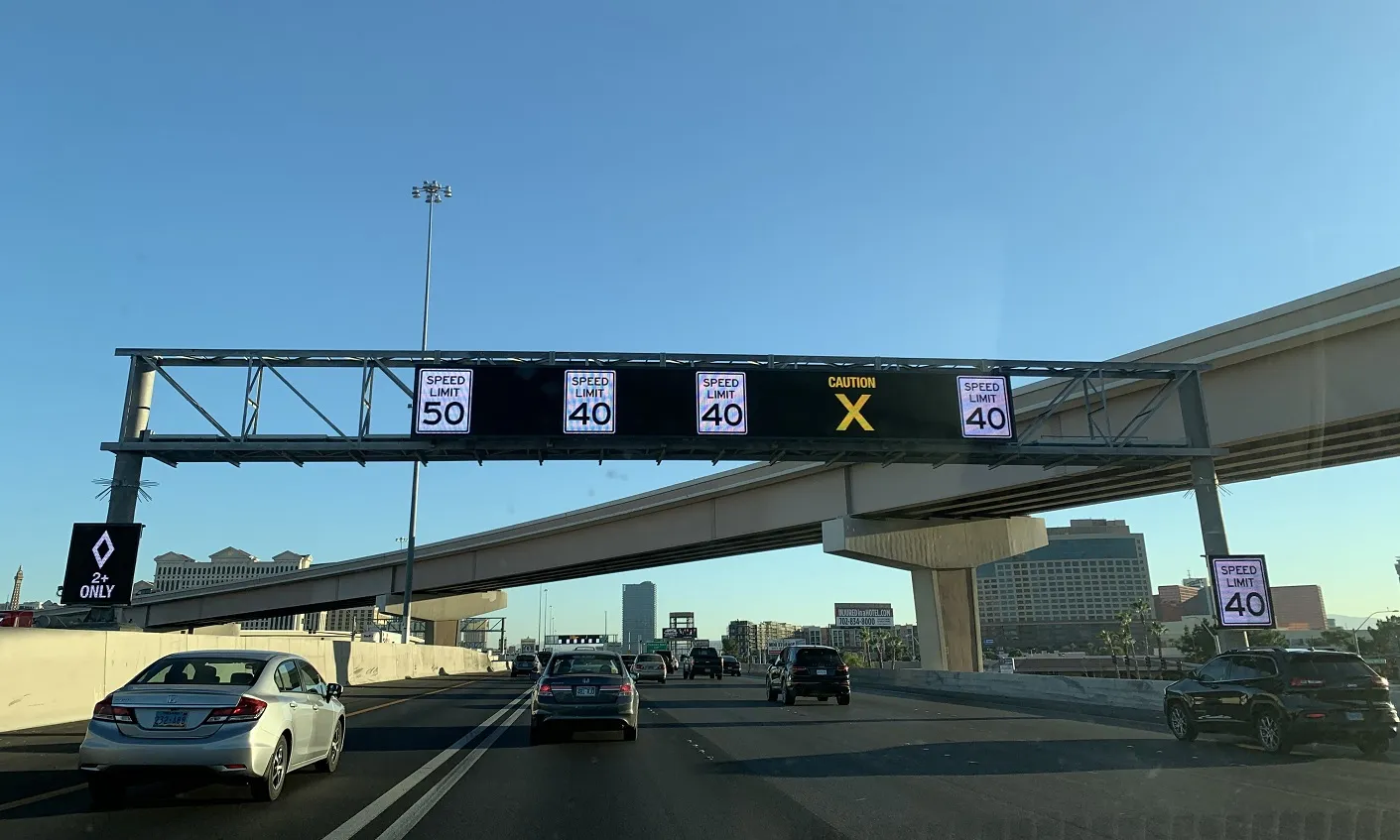
Currently deployed technology is being used to detect motorists ignoring the ‘red-X’ signs that indicate the lane is closed, as Colin Sowman hears.
With an increasing network of ‘Smart Motorways’ - all-lane running or the opening of hard shoulders during times of congestion -
However, Nick Pinnington, senior ITS engineer with
As part of a wider compliance strategy HE is developing to deliver both safety and congestion benefits the organisation has commissioned Arup and
Pinnington, and Aecom’s technical director David Cowell, described the three-phase framework:
Engineering - such as signage changes to make compliance easier and more intuitive;
Education - to inform drivers of what constitutes compliant behaviour;
Enforcement - to tackle repeat offenders and those who wilfully disobey the law.
The M6 trial used the existing equipment above and beside the carriageways and processes already available in the existing back-office systems of the Central Motorway Police Group (CMPG) and Staffordshire Safer Roads Partnership (SSRP). Offenders were identified using ANPR cameras with the time and direction cross-referenced with Highways England’s database to ensure the hard shoulder was not open as a running lane when the offence occurred.
CMPG and SSRP processed the offenders’ information to allow access to the vehicle registration database and comply with data protection requirements. Once verified, SSRP produced a warning letter, accompanied by an explanatory leaflet, as quickly as possible in order that the journey was still fresh in the driver’s memory.
More than 30,000 letters were issued to drivers from across the UK during the seven-month study - although the majority lived in the vicinity of the study site. The letters contained a link to an online survey which allowed motorists to post feedback and many of the respondents claimed not to know the signage meant they could not use that lane.
Cowell said, “ Before the trial started around 5% of motorists ignored the red-X signs. This reduced to 4.6% during the trial and has continued to fall after the trial ended to the current level of 4.4%.”
Following driver feedback, HE has improved the signage of dynamic hard shoulder sections, resulting in further improvements in compliance.
Most repeat offences occurred in the two- or three-week period before the warning letters arrived. No formal enforcement action has been taken against a handful of serial repeat offenders.
HE plans to deploy the system in more locations using either mobile or permanent sites to address both hard shoulder misuse and the growth in red-X non-compliance. Currently compliance monitoring is being used to identify which locations would most benefit from such deployments and according to the presenters the same processes could also be used to identify close following (tailgating) vehicles.
A new National Driver Offender Retraining Scheme course focussed on motorway driving is under consideration. Errant drivers may be offered the choice of attending this course as an alternative to an endorsement or a court appearance. Also under re-evaluation are sections of the Highway Code and the driving test pertaining to Smart Motorways.










